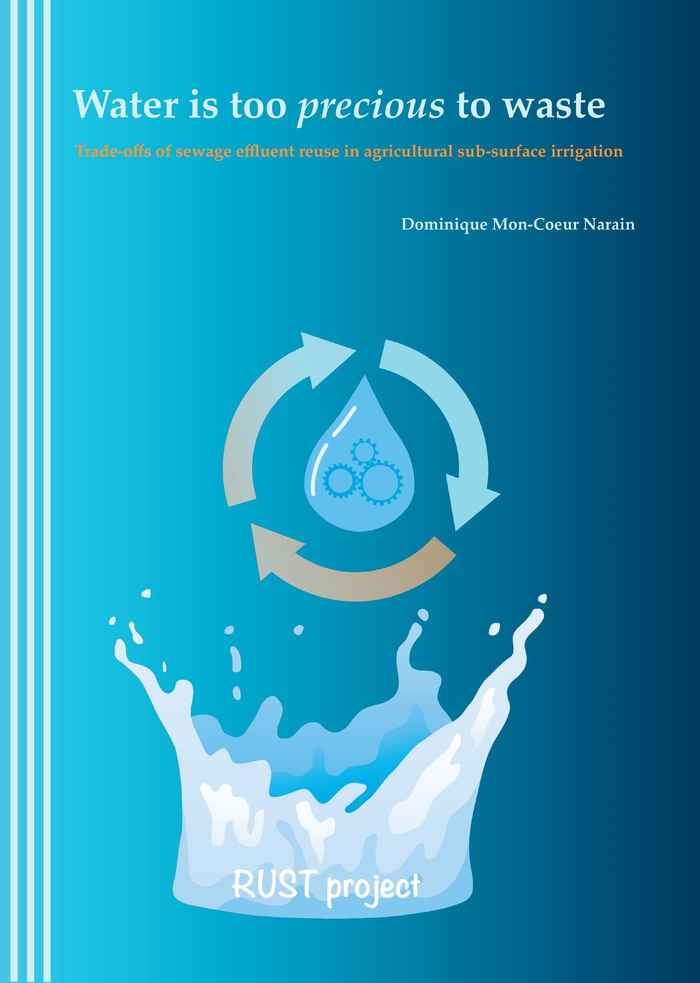PhD defence ceremony of Dominique Narain
- Date
- 10 May 2023
- Time
- 10:00
- Location
- Agnietenkapel

Trade-offs van het hergebruik van afvalwater voor irrigatie in de landbouw
Worldwide, freshwater scarcity is often caused by a high demand from the agricultural sector that globally accounts for 69% of fresh water withdrawal. This is not only an issue for arid regions with low rainfall and high population density that are prone to increasing water stress; temperate areas with intense agriculture also suffer from frequent non-potable water shortages. The intentional reuse of sewage treatment plant (STP) effluent in sub-surface irrigation (SSI), which is currently discharged in large volumes to surface water, may provide an alternative freshwater source. Additionally, the load of contaminants of emerging concern (CoECs) - such as pharmaceuticals, biocides, personal care products, and their transformation products - to surface water may be reduced due to soil passage and related (bio)transformation processes. This dissertation focused on the re-use of STP effluent for SSI in agriculture which serves the dual purpose of diminishing emissions of CoECs into surface water and supplying water to crops. Accurate data on CoECs fate in SSI systems concerning STP effluent reuse is needed to assess the risk, opportunities and feasibility of sewage effluent reuse in SSI systems. After a general introduction (Chapter 1), the first task of this thesis was to identify the risk and opportunities associated with sewage effluent reuse in SSI systems based on a critical review of the literature (Chapter 2). The second task was to examine a full-scale SSI field study on the removal of CoECs based on their persistency-mobility classes (Chapter 3). Applying herein understanding of how SSI systems function, a batch incubation experiment (Chapter 4) was set-up and operated for six months to gain deeper insight into the changes in microbial community composition and subsequent enhanced biodegradation as a result of SSI with sewage effluent. And in Chapter 5 a feasibility study was conducted in a country with a temperate climate that experiences periodic freshwater shortages in agriculture. For this purpose, the Netherlands a densely populated country with 1.9 million hectares (Mha) cropland and well distributed STPs across the country, was selected as case study. Finally, the synthesis (Chapter 6) describes the main concepts and developments that need to be addressed to be able provided to move towards upscaling SSI with STP effluent to larger scales.
